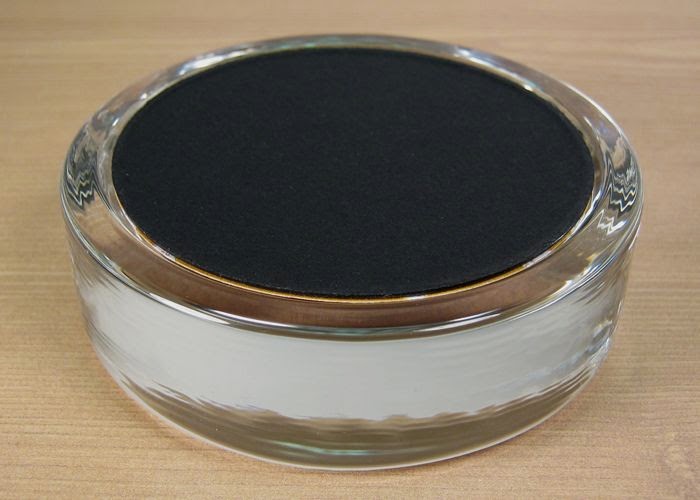Many of our customers have asked for a little guidance when it comes to personalizing paperweights with a name, monogram, or other text. These basic, step-by-step instructions are an excellent starting point. They can be also be modified in several different ways.
In most cases, the first step in designing a paperweight with text is to create a layout using a desktop publishing program. If you don't have publishing software, a word processor or image editor with text capabilities can also be used.
Our website includes the display area measurement for each of our paperweight kits. Using a shape or drawing tool with your ruler visible, draw a shape (circle, oval, rectangle, etc.) that is the same size as the paperweight's display area. For this project I'm using the Elegant Oval Paperweight Kit (PhotoWeights: Elegant Oval) which includes a smaller display area in the center. I've drawn two oval shapes. The outside oval is the size of the mounting board. The inside oval marks the actual display area.
I'm going to print my name onto decorative paper, so the name is all I'll print. If you wish, you can place a background image or solid color behind your text so it prints as ready-to-use artwork.
I deleted both outlines prior to printing the name because I'm going to position a template over my artwork to create a cut line.
I printed a test copy so I could check to make sure the name fits well within the paperweight.
Because I'm printing the name onto uncoated, textured scrapbooking paper, I need to print this using my ink jet printer. Toner doesn't adhere well to textured paper. Many decorative papers have coatings that can damage laser printers. If you're using a laser printer, use only laser-safe paper.
I taped a piece of scrapbook paper to a sheet of letter sized paper because my printer has a difficult time recognizing odd sized pages. I recommend leaving 1-2" of space at the top of the page to allow room for the tape. This will also help the page feed properly into your printer.
Be certain there are no adhesive areas of tape exposed, including pieces that may have gone beyond an edge of the paper. You don't want any tape to catch inside your printer.
All printers are different. Consult your user's guide.
I used a template (PhotoWeights: Display Area Templates) to draw a pencil line that will act as my cutting guide.
The name was cut out with a pair of scissors. If any traces of the pencil line will appear in your paperweight, gently remove them with an eraser.
Place the printed paper onto the adhesive side of your mounting board and press all over to ensure an even bond.
Place the board face-down into the recessed area on the bottom of your paperweight. Be sure to clean the paperweight with glass cleaner prior to completing this step. Also be sure the bottom surface of the glass if free of smudges and dust particles.
Finish by applying the self-adhesive bottom pad to the underside of the paperweight.
This step-by-step guide can also be used to create monogram paperweights and paperweights with poetry, quotes, and other text.
If you have any questions, or if you need help with your particular paperweight project, please feel free to contact me directly at susan@photoweights.com.
























































